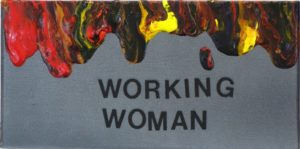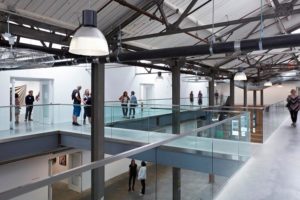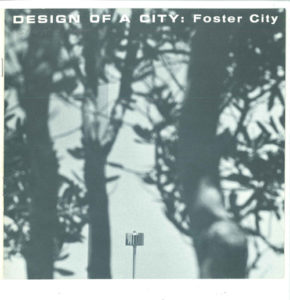On Friday, January 13, 2017, a thoughtful and appreciative crowd (including at least a couple of men, who appeared to be having a fine time) filled the theater at Fort Mason’s Festival Pavilion to hear four distinguished women discuss their various roles in the San Francisco Bay Area arts ecosystem. Part of the annual FOG Design+Art fair, SFMOMA’s ArtBites panel discussion featured Cheryl Haines, founding executive director of the FOR-SITE Foundation, Stephanie Hanor, director of Mills College Art Museum, and Mary Zlot, art advisor at Zlot Buell + Associates. It was moderated by Deena Chalabi, SFMOMA Barbara and Stephan Vermut Associate Curator of Public Dialogue.
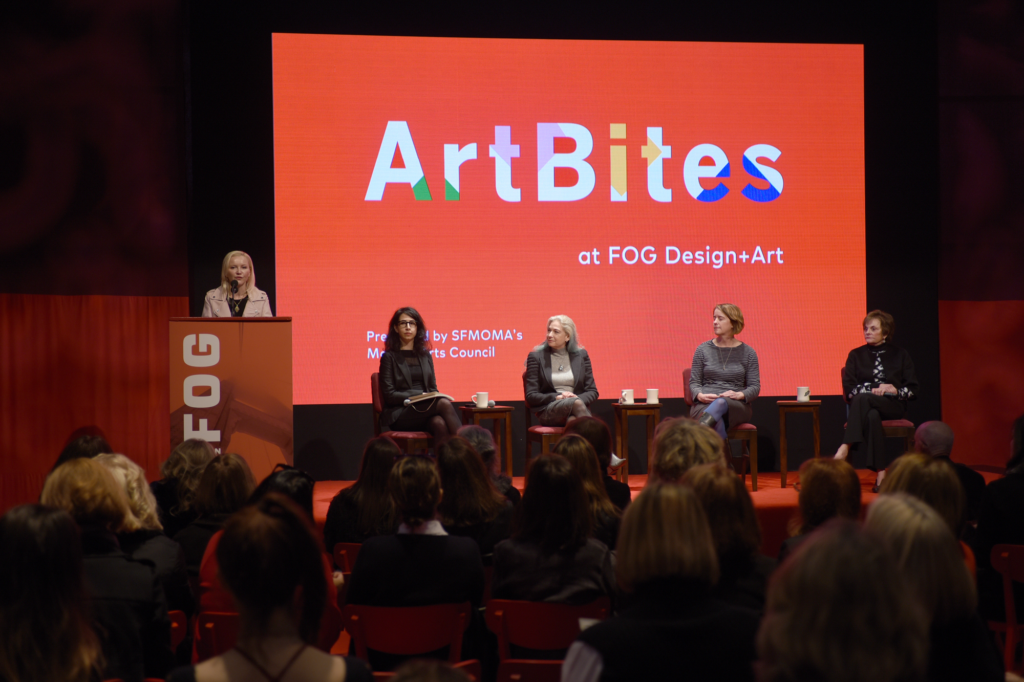
Photo: Joseph Driste Photography
It was truly wonderful at the end, in response to an audience question, to hear each of the three speakers independently assert that being a woman had not been an obstacle to her career achievements. But that came on the heels of some tough statistics about women in the art field, whether in terms of female museum staff and their earnings on the dollar compared with their male peers, or the proportion of women museum directors at major institutions, or gender disparities in terms of artists’ representation in gallery rosters and museum exhibitions.
Each articulated a different professional agenda. Haines described a career arc that evolved from running her own gallery to support the artists she loved, to a vision (through FOR-SITE) that involves engaging the broader public, historical sites (World War II bunkers, a historic prison), and place-based installation work. She said she relishes “opening people’s minds,” whether the people in question are art tourists, veterans, or school groups: “In my last four or five large projects, I’ve realized that my responsibility as a curator is to bring forth social issues, like freedom of expression. My vision has become both broader and more specific.”
Zlot, who is of course running a commercial business, expressed exactly as much enthusiasm about education as Hanor, who is deep in the education field, working at a university museum. Both are dedicated to mentorship and encouraging young people (especially women) to persevere in the field, and they used similar language to describe a fertile terrain of up-and-comers in the area who need encouragement and advice from more senior peers—and their obligation to provide it. “We have the responsibility to create the next generation of collectors out of people who are involved in the arts,” noted Zlot. “There is so much potential here. This city has become very young, and we need to engage with those who are eager to learn and want to become part of the art landscape. My partner is on the board of the Berkeley Art Museum, and I’m on the board of California College of the Arts. We have a staff of seven women, and they are on various committees of nonprofits and so on.”
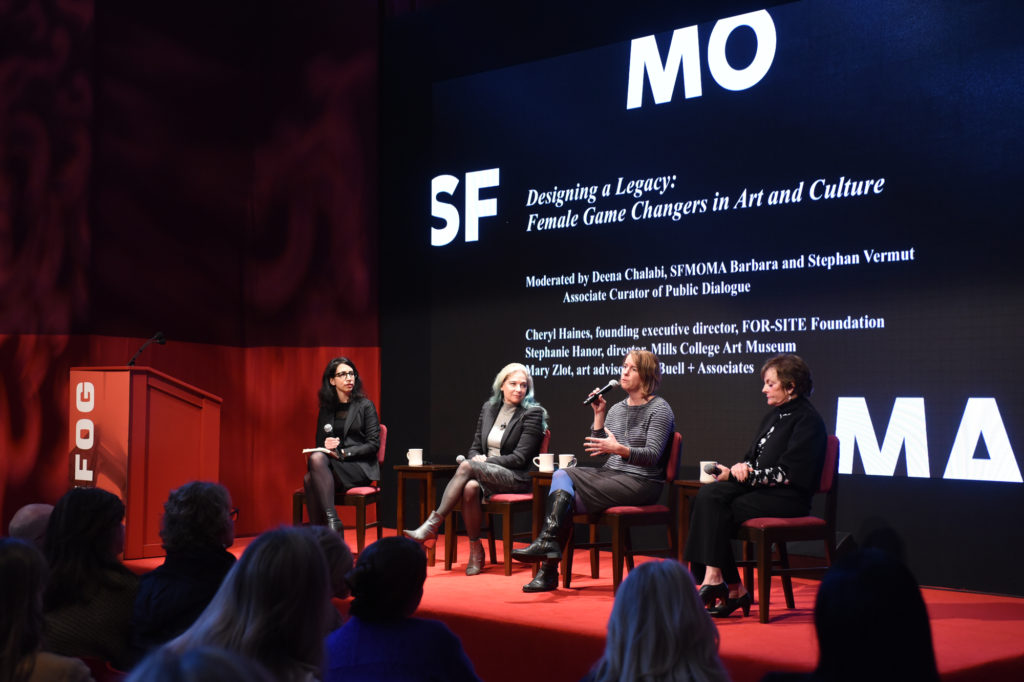
Photo: Joseph Driste Photography
Hanor agreed that mentorship is key, and that Mills is in a unique position to provide that, along with real work experience, to students—not just grad students, but undergrads as well—who are hungry for it: “We use all our available resources, whether personal-professional resources or institutional resources, to give direct professional development experience to the younger generation. Our students are doing social media, marketing, handling the objects. A lot of that experience might not otherwise come until years into a museum job.”
Some interesting distinctions were teased out regarding galleries versus museums in terms of how women fare in these two realms (which might seem interchangeable to those outside the art world, but are practically different planets to those on the inside). Chalabi noted our current condition in which women overwhelmingly predominate as museum staff members but lag in positions of leadership. Zlot noted that, if you look at both small and larger institutions, things have improved, with women comprising 41 percent of museum directors nationwide (although those numbers definitely get more depressing when considering only large institutions). She also pointed out that in the commercial gallery realm, some of the most powerful individuals on the planet are women: “In my world, women are very successful, and continue to be. It’s the public domain of intuitions that needs to play catch-up!”
More broadly Hanor called out that the pay scale for general staff is “horrible” in both museums and higher education, and that “affordability and sustainable living wages for art workers is a big problem. And of course it’s also related to gender.” Haines chimed in with the indisputably true argument that we could be saying the same about others besides women: “In some ways I resist the gender generalizations. We could ask the same questions about people of color. The art world is about the cultural elite. People who have worked in ivory towers, whether as curators or something else. What’s important to me is collaboration. If we can break down the barriers of the classic structure of the art world, it would be easier for diverse individuals of all sorts to advance based on their skills and capabilities.”
Several audience questions brought introspective responses. For instance: “Most people view galleries as glacial and forbidding. I was just in New York in Chelsea, and at only two galleries was I greeted in any way. It’s a total mystery why they are so overtly unfriendly!” To which Haines replied: “What you’re describing happened to me thirty years ago. I went to a gallery and was ignored. I think I was wearing the wrong shoes. I went home, concerned and confused, and vowed to open a gallery without that kind of attitude.” [nodding and applause]
Zlot joked that she’d certainly never had that happen to her. Hanor recommended some new galleries that have been opening up as alternatives to the older, seemingly daunting model: “Minnesota Street Project, for example, is presenting programming that is less about openings and more about performances, lectures, talks. Audience engagement that brings people into the spaces.”
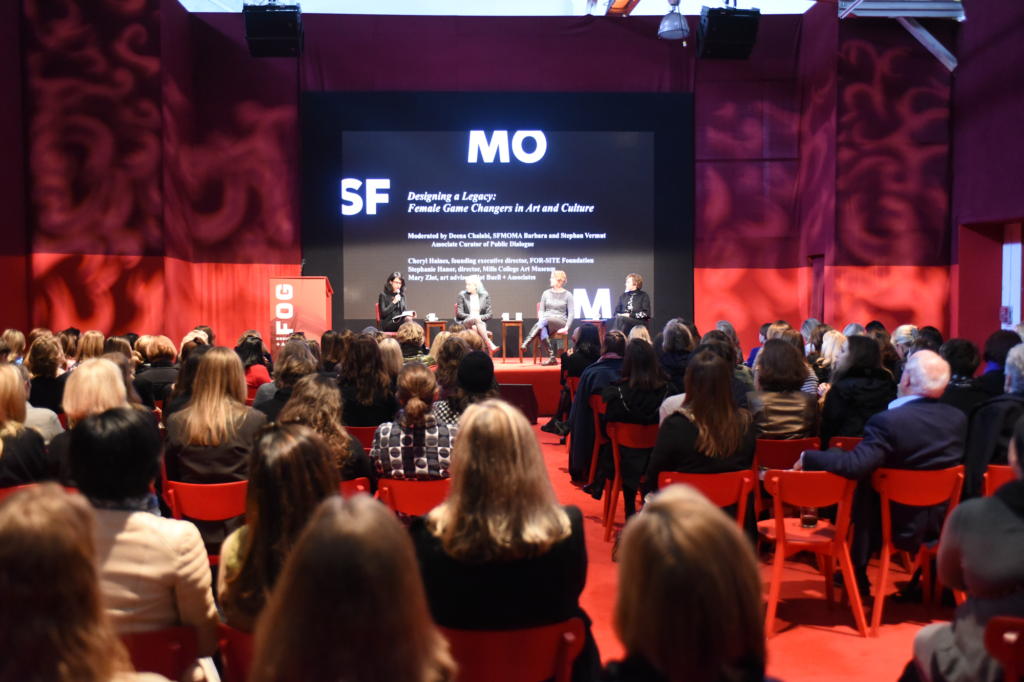
Photo: Joseph Driste Photography
The inspiration for the panel discussion, as Chalabi explained at the outset, was the upcoming exhibition To Those Who Have Eyes to See, featuring a site-specific installation at SFMOMA’s Koret Education Center by Andrea Geyer. It is part of Geyer’s ongoing project in which she brings to light the histories of, and connections among, American women who were early champions of modern art. In this iteration she focuses on Grace McCann Morley, SFMOMA’s workaholic founding director, whose tenure lasted from 1935 until 1958 and whose legacy in the institutional archives is in equal parts intimidating and endearing, in the best possible way (this author could not help praising her, and mulling over her inexplicable obscurity, in my first commissioned story for SFMOMA’s Open Space).
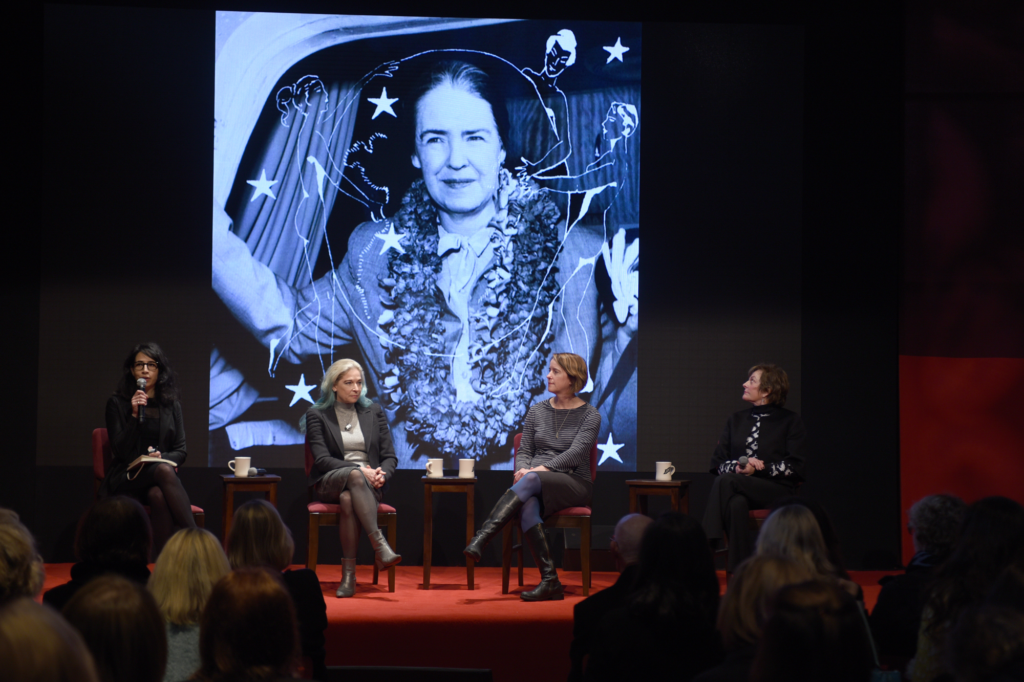
Photo: Joseph Driste Photography
Here’s hoping that To Those Who Have Eyes to See brings Morley’s incredible legacy to the attention of many more people, among them aspiring young female arts professionals.
